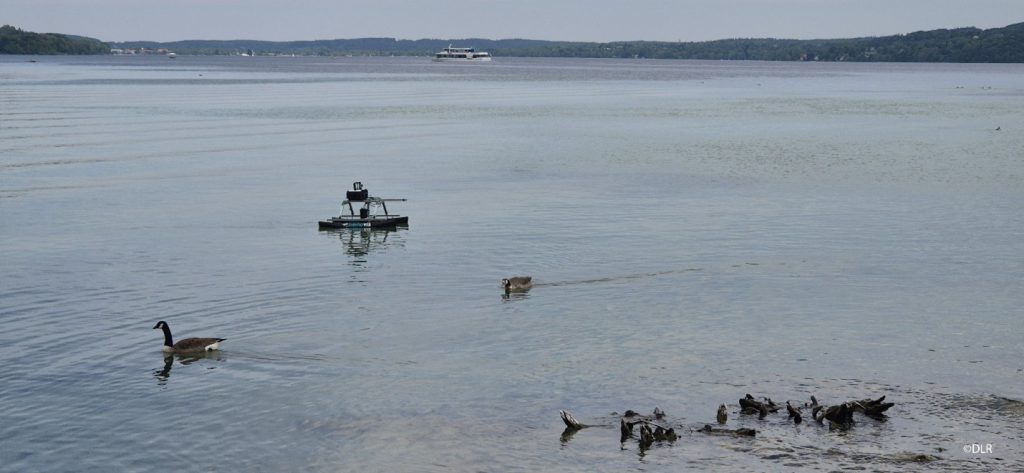
June 2024
As part of the TRIQUETRA project, the German Aerospace Center (DLR) has created a high-precision 3D model of the early Celtic pile dwellings around Roseninsel in Lake Starnberg. Using the robotic surface vehicle LimnoVIS, DLR collected extensive underwater images, which were then used to generate this detailed model.

By the end of May 2024, LimnoVIS gathered high-resolution images of the submerged remnants, bringing the underwater wooden structures to life as if they were above water. This model allows archeologists to examine the site without diving, providing a clear view of its current condition.
The Bavarian State Department for Monuments and Sites (BLFD) is now using this model to conduct detailed examinations and surveys. This advancement aids in the preservation and study of the ancient remains, documenting their present state and contributing to ongoing research efforts.

This can be used to examine and survey what is left from the ancient times, but also to show the public what can’t be seen from the surface. The prehistoric pile dwellings are part of the UNESCO World Heritage “Prehistoric Pile Dwellings around the Alps,” with Roseninsel being one of eight test sites within the TRIQUETRA project.
DLR’s cutting-edge technology and BLFD’s utilization of these products ensure that these historical sites can be studied and appreciated by future generations.